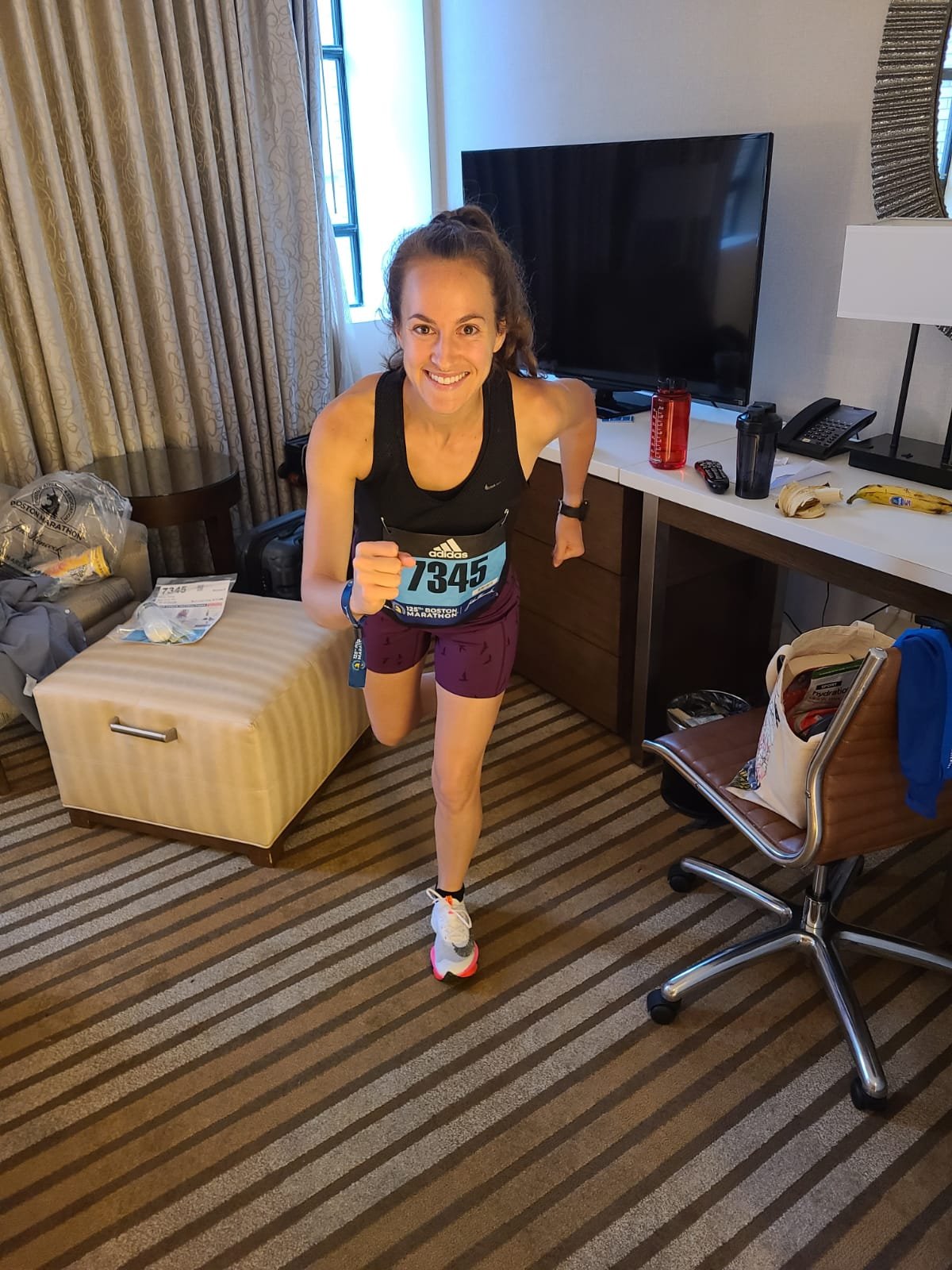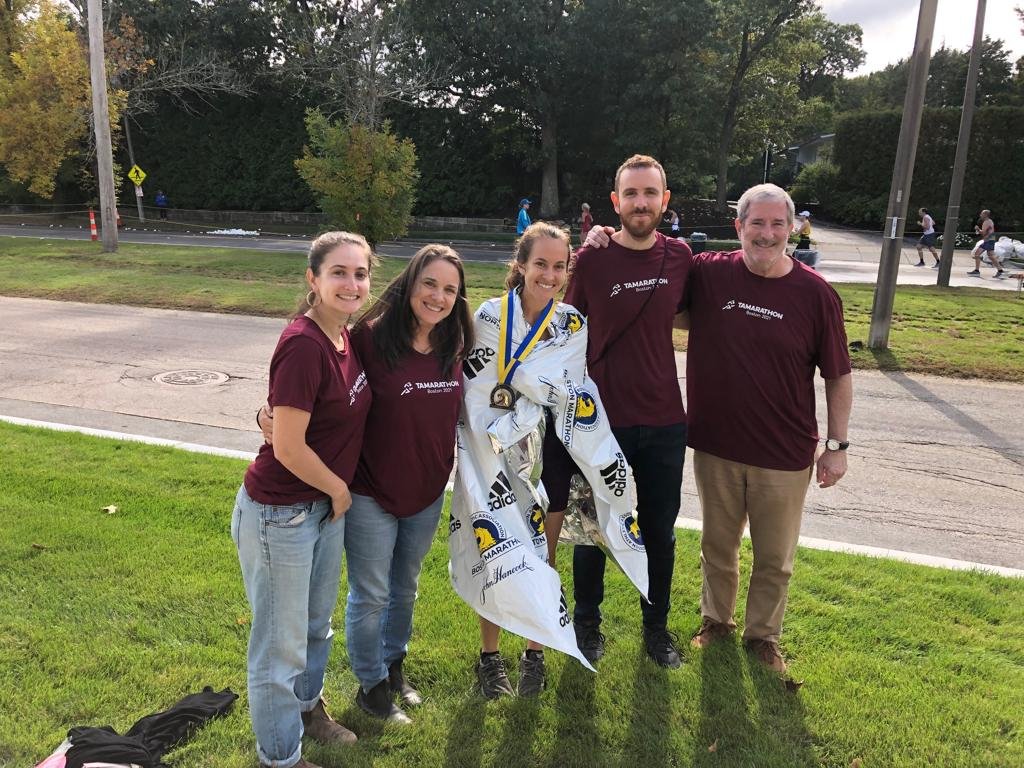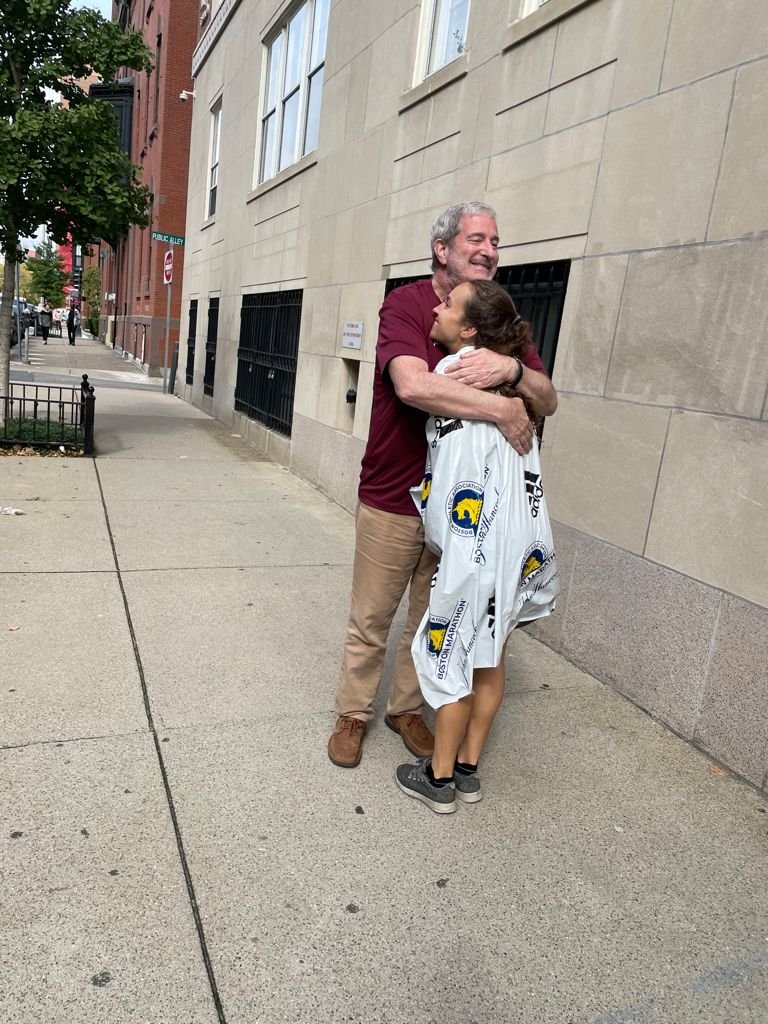Tips for Running the Boston Marathon
I ran the Boston marathon two days ago (October 11, 2021), and wanted to write about my experience while it is still fresh in my mind (and while my sore legs can’t carry me very far!). Running a marathon is always an emotional experience, but the energy of running an in person race after a stress fracture and COVID cancellations was something special.
From the beginning: Getting to Boston!
This was my first time traveling for a marathon - for my previous two, I had been living in the city I ran in, so this was a new experience. I loved getting there early and being able to settle into things without feeling rushed.
I took the train to Boston with my husband Daniel on Friday. We spent the weekend in Boston, which was great because we were able to soak up some of the marathon atmosphere. I had to get a vaccine verification, went to the expo to pick up my bib, and explored Boston (including buying some things I had forgotten at home, like a blender bottle and Skratch hydration mix!).
I spent the two days before carb loading, aiming for a round 8 grams of carbs per kilogram body weight (around 400 g total). This was actually really fun, but it takes some planning. The day before the race, I had 2 mush overnight oats, a banana, 3 bagels (2 with jam), 3 scoops of scratch, and pasta and bread for dinner.
Marathon Monday: Getting Ready
On the morning of the marathon, I woke up around 6:30 am, and had a coffee coconut flavored mush, a banana, water, and a cup of coffee. I was feeling nervous and a little queasy, so it was somewhat hard to get this down. I had practiced running with these foods before, so I knew they would sit well.
Breakfast in the hotel, feeling queasy and excited
I got dressed, laced up my sneakers, and headed towards the bus loading area with Daniel for my boarding time of 8:15.
I got to the bus loading area, used the porta-potty quickly and got on. It was somewhat misty and lightly raining at this point, but the weather was low 60s, which I felt good about. We left right on time and got to Hopkinton at around 9:15. I used the bus time to drink a scoop of UCAN at around 8:45, an hour before I began running. Once we got to Hopkinton, I used the porta-potty and did a quick warm-up jog. I was planning to do a longer warm-up, but I was too antsy to start and so began following the crowd ambling toward the starting line.
Due to COVID, the Boston Athletic Association decided to have a rolling start this year. Rather than the usual countdown for each corral, when all of the runners in a given time slot shoot out together, each person was able to start on their own. While the adrenaline of the starting gun was missing, this allowed for more space at the start, and I didn’t have to spend the first few miles weaving in and out of people.
My Marathon Race Plan
Unlike my previous marathons, where my plan was essentially “start fast and keep going,” I had a solid plan. My goal was to beat my previous time, which was 3:14:51. I knew the Boston course started out with downhills until around mile 10 (16 km), was somewhat flat until mile 18 (28 km) where the Newton hills began, and then flatted out until the end.
The face you make when you’re in the thick of the Newton hills
My plan was to start out at around a 4:34/km pace, holding back slightly on the downhills so as to not burn myself out too early. I had started NYC way too fast, and paid for it in the end when I slowed down significantly. After the downhills, I was hoping I would be able to push the pace to 4:20/km until reaching the Newton hills and Heartbreak Hill. I was super nervous for these hills because of how much everyone talks about them. I knew my pace would slow on the hills, but once I made it to 34k, I just had to get to the end and would give it all I had left.
My cheering squad! In Tamarathon shirts!
3, 2, 1, Go! What I Did Differently
My race plan, the weather, and my fueling worked well and I ended up having a great race. I held on, pushed through, took in gels and water early, and I finished in 3:06:10!
A picture is worth 1000 words?
It was hard, and I am so sore, but so happy.
After my stress fracture occurred towards the end of training for Boston 2020, I was determined to do things differently this time. Here is where I focused my efforts:
Practiced pre and mid run fueling! I didn’t really do this for my first two marathons, because I’d get cramps while running with food in my stomach. Studying nutrition helped me understand the stomach is a muscle and you can train it to be able to absorb and empty food during runs, which is why you can’t wing it day of! I was able to eat way more before and during the marathon (around 5 gels during, mixing up brands and flavors)
Prioritized post run fueling. Especially on long run days, I made sure I was eating more overall. Low energy availability is very common among runners (not eating enough to support training + life) and can contribute to stress fractures
Added in run specific strength training, not just general gym sessions
Carb loaded the days leading up to the marathon
Incorporated dairy often throughout training to make sure I was getting calcium for my bones, taking a multivitamin that has vitamin D (bones again, plus muscle recovery) and iron (my labs showed vitamin D and iron were in the low normal range)
This surpassed what I thought I was capable of, especially following a stress fracture. Was it the Boston energy? Was it the bagels? This race allowed me to think about a goal I was always too nervous to say out loud - that just maybe, sub 3 is in my future!











